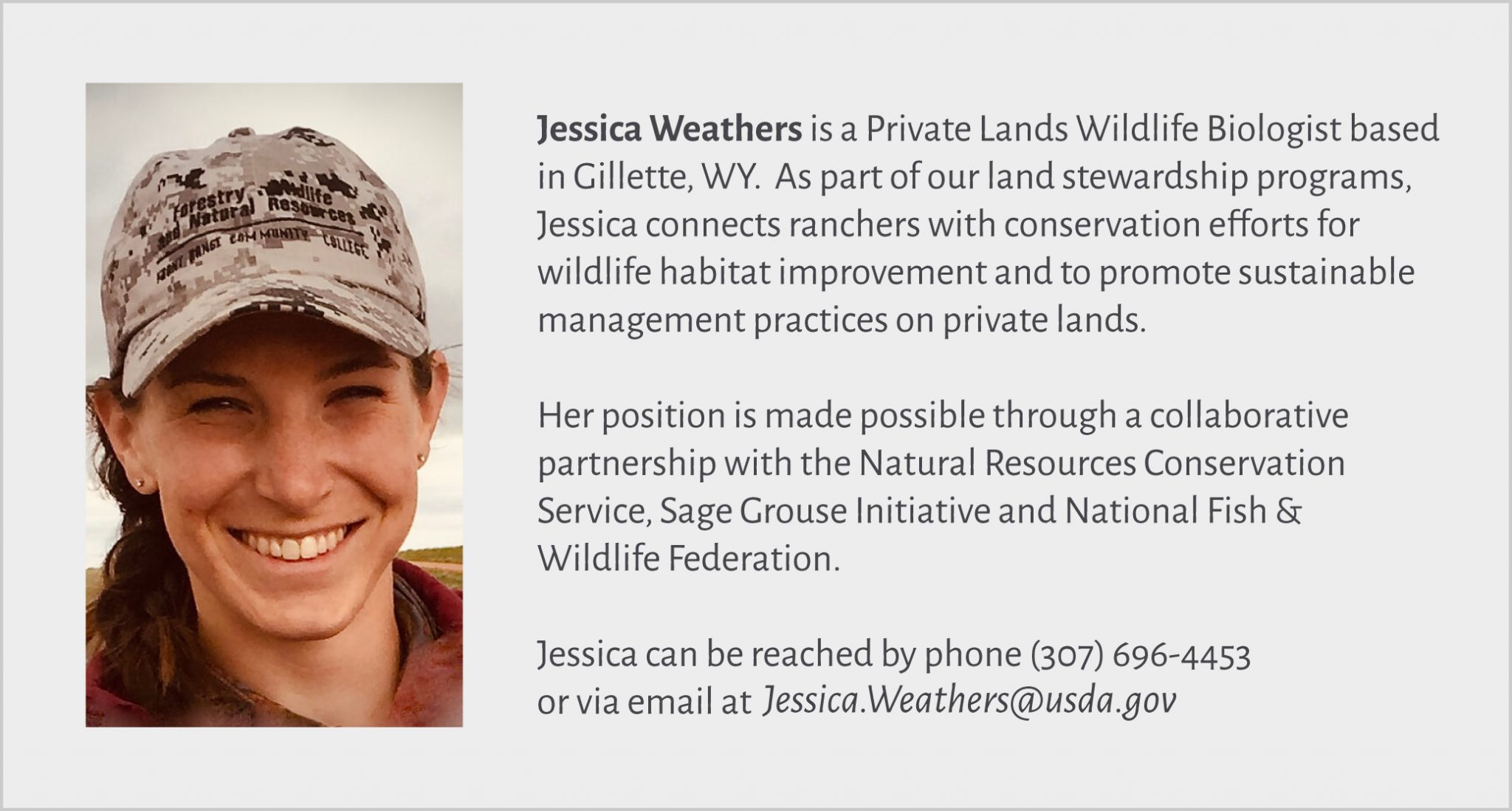Welcome to part 2 in a 4-part series (click here for the part 1) exploring perspectives on modern ranching.
Jessica Weathers (Private Lands Wildlife Biologist) spoke with Marilyn Mackey and Tom Reed—ranch owners in NE Wyoming—about family heritage, the influence of the oil and gas industry, changing conservation practices, and challenges facing the future of ranching in rural America.

Days in the Lives of Ranchers (Part 2 of 4)
100 years of ranching and family heritage
“I grew up on a ranch… I guess I just never considered doing anything different,” says Marilyn Mackey—wife, mother, grandmother, and fourth generation rancher. “Granddad dreamed of being a cowboy” and in 1917, he homesteaded in Gillette, Wyoming. He survived the great depression and harsh droughts, passing his dream down to his children. Marilyn and her husband Dudley still work and live on the ranch that Harold Scott established three generations ago.
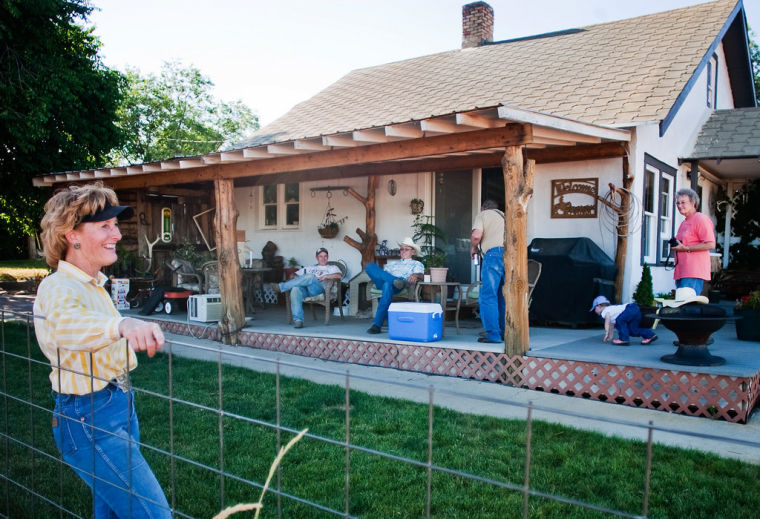
Marilyn loves ranching and when asked why, she explains, “I am walking the land of my grandparents and great-grandparents…. As you get older, that is more meaningful. We honor that— [granddad’s] work and sacrifice. And now I’m trying to do the same thing.” Marilyn’s children, Scott and Amanda, grew up on the ranch, as have her grandchildren. The newest members of the clan seem just as eager to keep the ranch in the family. And so far, her family ranch is doing well, celebrating its centennial last year.
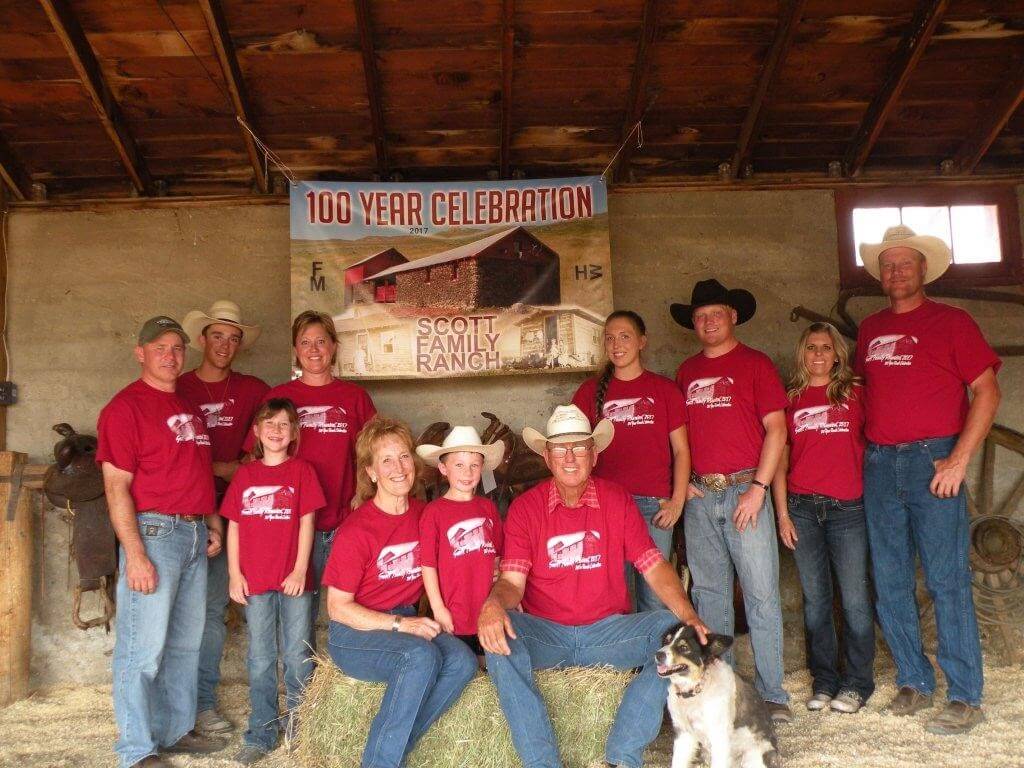
“I always wanted to come back to the ranch” ~ Tom Reed
Tom Reed’s story begins similarly. Tom is a second generation rancher. “Well, it’s how I grew up; on a ranch.” Tom’s mother and father, Earl and Jewell, homesteaded in Thunder Basin, Wyoming in 1947. Tom and his wife, Beverly, have run the business since 2011, mostly focused on raising sheep but also running cattle.
Tom trudged through the snow to milk his family milk cow while we talked. The temperature hovered at 17 degrees and the thick coats his cows were sporting said winter wasn’t close to over. I asked him where he finds the motivation to get through the hard days. “Because I grew up that way, you didn’t let those days get you down too far,” he responded. “You know, you had to go out in the cold and it might be 30 below and the wind blowing, and you had to go take care of your livestock—but those days aren’t every day. You also have the really good days. And after you get so far along in, you know, you get to be 50 years old or older, then all of a sudden you think I can’t do anything else; I gotta continue to ranch. You do what you like to do, and know how to do, so you just continue….. and no, I wouldn’t trade.”
Finding your place
“My degree is in wildlife management,” says Tom, “Because there wasn’t a place [for me] at the ranch when I started college.”
At first, it may seem odd that ‘having a place’ for Tom would be a problem on a ranch with thousands of acres, but this problem is remarkably familiar for ranchers like Tom and Marilyn. Over time, it becomes increasingly difficult to sustain multiple generations on the same acres that originally only needed to provide for a single household. Ranchers are often faced with the choice of either dividing their land between their children (into tracts which typically aren’t large enough to be self-sustaining ranches) or choosing one heir to the family legacy, with the remaining siblings pursuing other livelihoods.

Photo: Jennifer Strickland, USFWS.
“It gets harder with each generation,” reflects Marilyn Mackey, “A lot of times, the ones who don’t live there, when Mom and Dad die, might say ‘I want my money.’ And sometimes families just can’t get along. But [our ranch] is set up to hopefully stay in the family. There are a lot of things you can’t predict in the future.”
Marilyn’s family has divided land ownership among the family but still operate as a single cattle ranch. However, this solution comes with compromise. Marilyn’s husband works at the coal mine to help support the ranch. Marilyn exhaled deeply, “the difficulty is, to support financially that many families, there needs to be a secondary income.” In a 2011 interview with the Gillette News Record, Marilyn explained that it was challenging because the ranch simply isn’t large enough to provide sufficient income for everyone. Family members take other jobs to make ends meet. “We may have to be creative, but the plan is that it will stay in the family in some manner,” Marilyn said.
Keeping busy, staying positive
Despite huge adversity, Tom and Marilyn both have faith that their ranching operations will stay in the family. Family is the reason they started ranching, and it is their hope that the next generation will continue their legacy.
“The land is what ties families together and when the land is gone, you’ve lost that,” Marilyn concluded. “If you own the land, there is always a place to come home to. And we have seen through the years, people that their families have sold out, for whatever reason—and there’s a multitude of reasons that they do—but at some point in time, they come back, wanting to see where they grew up or where their grandparents grew up. There is just that tie to the land. And that’s what we tell our kids and our grandkids. That’s what holds everybody together. It’s a place to come home to.”
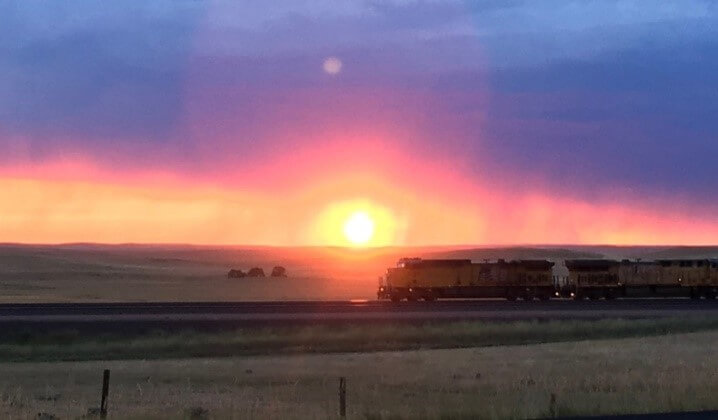
Additional sources of income
For many ranchers in northeast Wyoming, the natural gas industry provides the supplemental income needed to keep their ranching operations going. “Although some ranchers are rich, a lot of it comes from the energy industry,” says Tom, when asked about the stereotypical, Hollywood depiction of rich cattle ranchers. Landowners get paid for surface use agreements, mineral rights, and damages. This was how, in 1952, Tom’s father was able to buy his own land. “We had mineral rights and so we got oil income for a while, and that’s pretty well gone now, but at the time it made a place for me.”

Tom Reed is still waiting to see what the future holds for his ranch.
“I am hoping that one of my grandkids wants to come back and ranch,” said Tom, “that would be ideal to me, but they are pretty young yet. It’s not that I can say I can retire today, because there is nobody to take my spot on the ranch yet. Hopefully, before I get so that I can’t ranch, it’ll happen that way and it’ll continue on down the generations. That was Dad’s goal all the time, was to keep it as a family ranch. And so, the third generation is working here now. And the fourth generation is here and helping.”

Map of intact grasslands, Plowprint (lands that have been planted to crops beginning in 2009) and the new addition to the Plowprint in 2017 (lands that were plowed in 2017) in the Great Plains. Source: World Wildlife Fund Plowprint Report (2018)
Change of scenery
The Scott and Reed family ranches, just two of thousands on the Great Plains, have managed to stay intact in the face of increasing external pressures. Many operations have not fared so well. Ranches that fail, or which have no heir to inherit and continue the operation, are often sold. Parcels may be redeveloped for other uses that include farming, residential and commercial zoning, and resource extraction.
One of the biggest threats to wildlife habitat is the conversion of rangelands to row-crop agriculture. Large-scale crop production results in massive biodiversity loss, runoff of chemical fertilizers, damage to healthy soils, and increased water use. By comparison, ranching is very compatible with bird conservation. Acres of open grassland and sagebrush, access to water, and minimal development provide ideal conditions for both wildlife and raising livestock. Conservation organizations like Bird Conservancy of the Rockies are striving to preserve threatened ecosystems in this region, working with private landowners to ensure ranchers will continue to be stewards of the prairies for years to come.
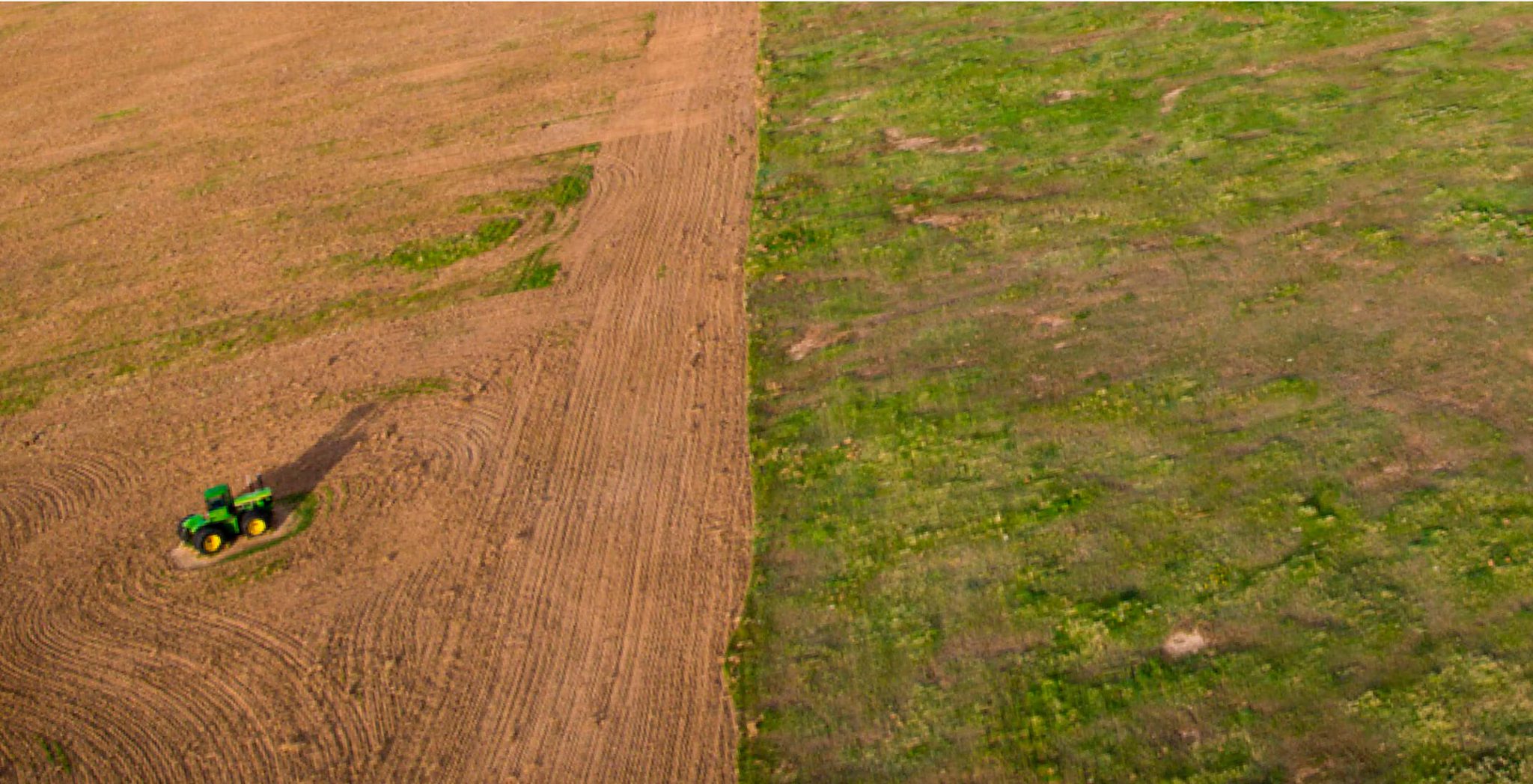
Source: World Wildlife Fund Plowprint Report (2018)
Next installment: Modern Ranching
Visit our website in two weeks for our next installment in this series! We’ll hear more from these landowners and get their perspectives about how ranching has changed through the years.
Jessica Weathers is a former Bird Conservancy of the Rockies Private Lands Wildlife Biologist based in Gillette, WY. This position was made possible with funding support from NRCS and the National Fish and Wildlife Foundation.
Bird Conservancy of the Rockies works with private landowners, land managers and resource specialists to implement habitat enhancement projects. Our biologists and rangeland ecologists identify wildlife-habitat potential and help modify or develop on-the-ground practices that maintain or increase agricultural production and benefit wildlife habitat. For more information, visit our Stewardship page!


